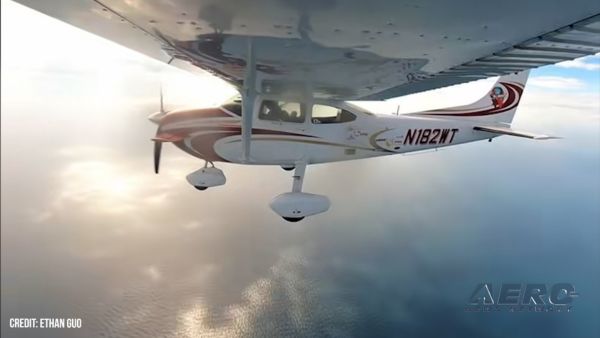Scientists Identify Meteorite With Earth-Like Chemicals Dating Back To The Earliest Days Of The Solar System
Researchers have identified a new type of meteorite with the potential to reshape our understanding of planetary formation.

A new paper from scientists at the Astromaterials Research and Exploration Science Division (ARES) at NASA's Johnson Space Center in Houston, Texas, show that the meteorite has an Earth-like chemical composition and mineralogy that dates back to the earliest days of solar system formation. They also confirmed that this meteorite is the oldest igneous variety ever cataloged.
"This discovery upends the classical view of volcanic evolution," said Francis McCubbin, planetary researcher and astromaterials curator in ARES. "Andesites, the Earth equivalent of this rock, evolved through extensive geological processes that are largely thought to be unique to Earth. The fact that this meteorite, which is also a rock, formed within 2.5-million years of the formation of the solar system indicates that there are previously unrecognized mechanisms to expedite the chemical formation of evolved volcanic rock."
The research provides evidence that chemically evolved crustal rocks, the type that make up the surface of the Earth, were forming on tiny planets called planetesimals within the first 2.5-million years of solar system formation -- long before the formation of terrestrial planets like Earth, Mars and Venus. This shows that even in the earliest stages of the solar system, rocks that would go on to have the building blocks of life were beginning to evolve.
"On Earth, andesites typically form from magmas with elevated abundances of water, however the results of our study indicate that water may not be needed to form silica-rich volcanic rocks like andesites," McCubbin said. "The presence of evolved rocks on other celestial bodies provides valuable insights into how to -- and how not to -- identify potentially habitable bodies within our Solar System and beyond."
This research reshapes the way that habitable planets are identified because it goes against the idea that all silica-rich rocks contain water, and therefore the keys to habitability. Since the silica-rich meteorite in the study likely formed without the presence of liquid water, searching for bodies in the universe that have silica-rich rocks as a way to define habitability may no longer work.
The research, titled "Silica-rich volcanism in the Early Solar System Dated at 4.565 Ga," was published earlier this month in the journal Nature Communications. The lead author of the study, Poorna Srinivasan, completed the research during an internship in ARES, which is responsible for curation and scientific research coordination for all NASA extraterrestrial samples.
Srinivasan was guided in her research by McCubbin and NASA Apollo lunar sample curator Ryan Zeigler. Their combined analysis revealed high levels of tridymite, a mineral that had never been discovered so abundantly off-planet, which led to the study's key findings.
The publication was completed in collaboration between NASA Johnson, The University of New Mexico, and Arizona State University.
(Source: NASA news release)
 NTSB Prelim: Piper PA-23
NTSB Prelim: Piper PA-23 ANN FAQ: Submit a News Story!
ANN FAQ: Submit a News Story! Classic Aero-TV: One Mans Vietnam
Classic Aero-TV: One Mans Vietnam ANN's Daily Aero-Linx (07.03.25)
ANN's Daily Aero-Linx (07.03.25) ANN's Daily Aero-Term (07.03.25): High Speed Taxiway
ANN's Daily Aero-Term (07.03.25): High Speed Taxiway



